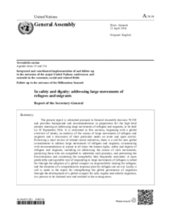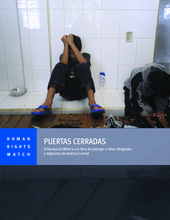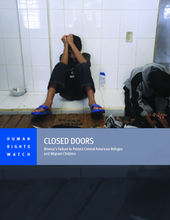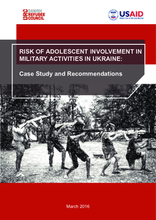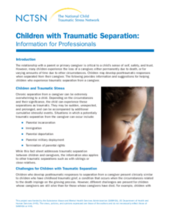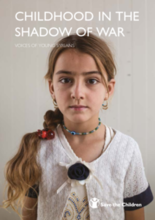Displaying 361 - 370 of 526
This chapter analyses how social identity influences children’s recruitment into armed conflict and their reintegration.
The filmmaker Daniel Mulloy has directed a new 20-minute film, entitled ‘Home,’ which is inspired by the current refugee crisis.
This report by the UN Secretary General provides background and recommendations in preparation for the high -level plenary meeting on addressing large movements of refugees and migrants, to be held on 19 September 2016.
Human Rights Watch llevaba a cabo investigación en México y Honduras en 2015 para examinar cómo México está aplicando la ley nacional e internacional en el tratamiento de migrantes centroamericanos, particularmente los niños.
Human Rights Watch conducted research throughout Mexico and Honduras in 2015 to examine how Mexico is applying national and international law in its treatment of Central American migrants, particularly children.
In this report, Lazarenko notes that adolescents between ages 16 to 18 who attend vocational educational institutions in conflict-affected areas are at a particularly high risk of involvement in armed forces/groups or sexual exploitation.
This guidance from the National Child Traumatic Stress Network provides information and suggestions for helping children who experience traumatic separation from a caregiver.
Mental health issues in war-affected children include depression, posttraumatic stress disorder (PTSD), and neurological problems, among others.
A mobile phone-based community surveillance system was piloted in the Democratic Republic of the Congo with the goal of identifying new cases of unaccompanied and separated children on a weekly basis.
Through the voices of children, parents and staff working in the region, this report by Save the Children presents a glimpse into the struggles faced by refugee and displaced children and families from Syria. The report is primarily based on children’s stories as told to Save the Children in urban areas in Lebanon and in camps and urban areas in the Kurdistan Region of Iraq. Drawings and other playful sessions were used with the children to help them tell stories of their everyday lives without the negative impact a deep interview might have.

